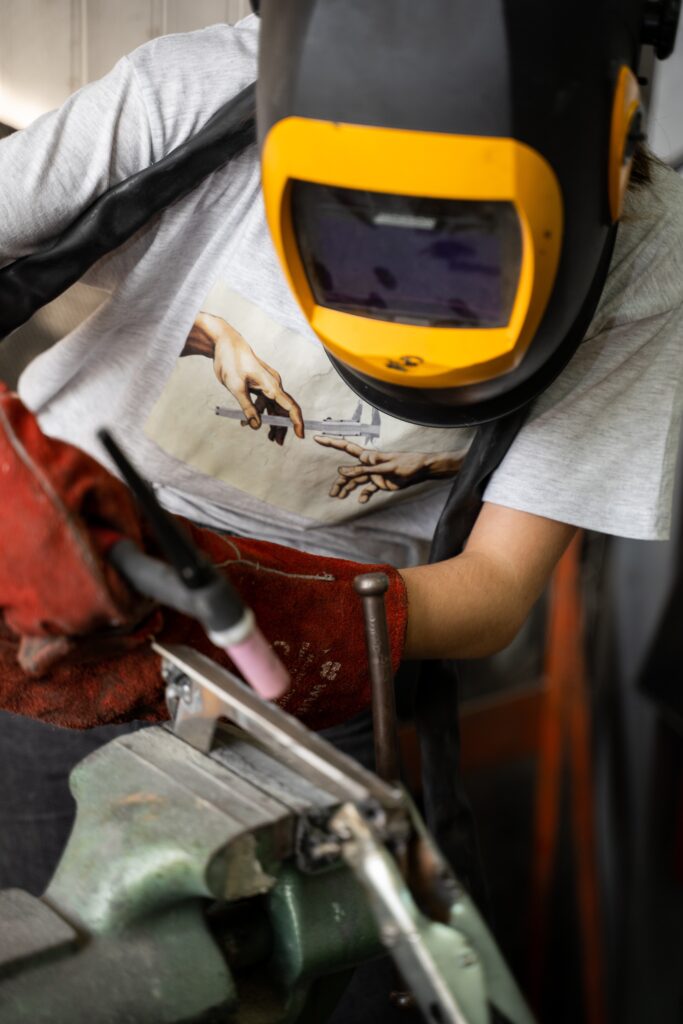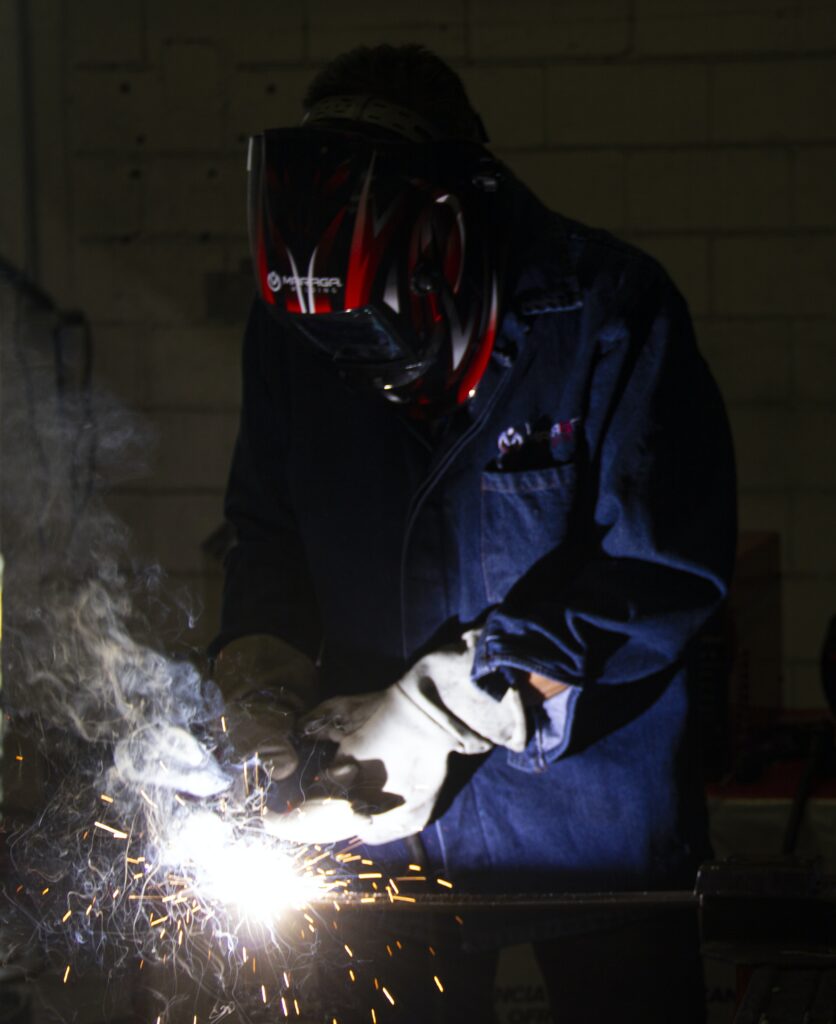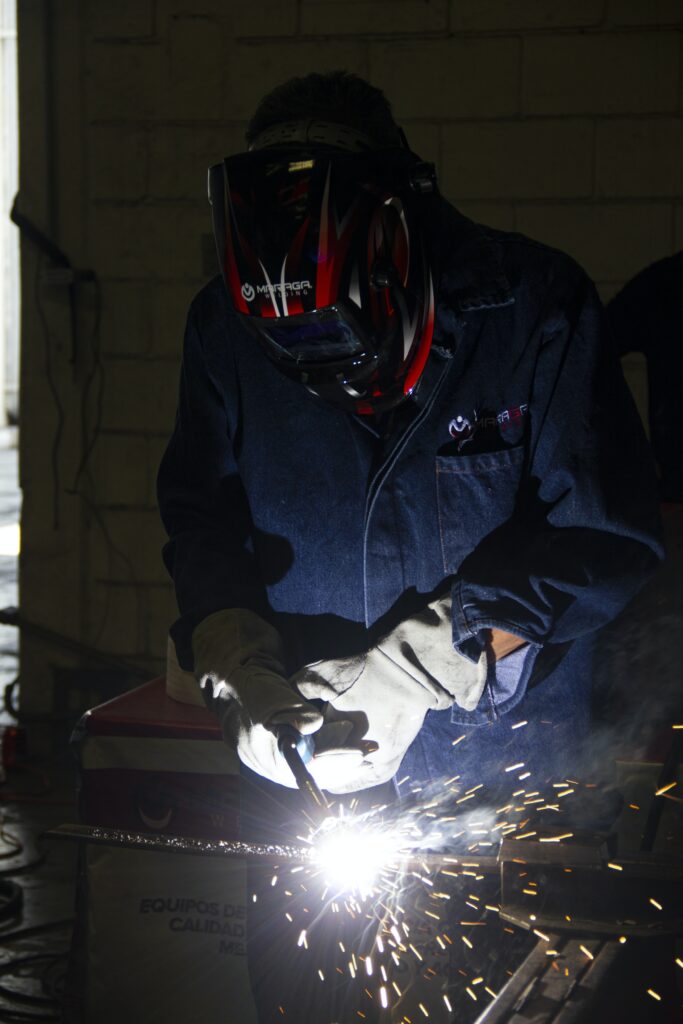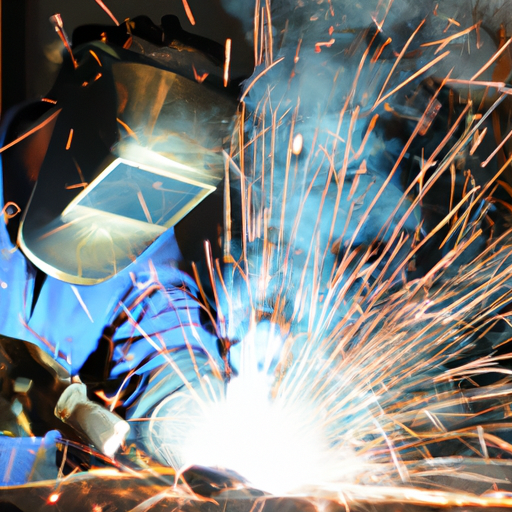Are you a curious individual, eager to explore the world of welding? If so, you may be wondering just how long it would take to acquire the skills necessary for this trade. Delving into the depths of this fascinating craft, we will uncover the time frame required to master the art of welding, whether you are a beginner or a seasoned DIY enthusiast. Whether you dream of joining metal together with precision or simply wish to expand your skillset, join us on this journey as we explore the answer to the question: How long would it take to learn welding?
Understanding the Basics of Welding
Defining welding and its importance
Welding is a process of joining two or more metal pieces together using heat and pressure. It is an essential skill in various industries such as manufacturing, construction, and automotive. The importance of welding cannot be overstated, as it enables the creation and repair of structures, machinery, and other metal products.
Different types of welding techniques
There are several different types of welding techniques, each with its own merits and applications. Some of the commonly used techniques include:
- Arc Welding: This method uses an electric arc between a metal electrode and the workpiece to create a weld. It is widely used due to its versatility and simplicity.
- MIG Welding: Also known as Metal Inert Gas welding, it uses a continuous wire electrode and a shielding gas to protect the weld from contamination.
- TIG Welding: Tungsten Inert Gas welding produces high-quality and precise welds by using a non-consumable tungsten electrode and a shielding gas.
- Stick Welding: Also referred to as Shielded Metal Arc Welding, it is a popular method for outdoor applications and heavy-duty welding.
- Flux-Cored Arc Welding: This technique utilizes a continuously fed wire electrode with a flux core, eliminating the need for an external shielding gas.
Fundamental principles of welding
To understand welding fully, it is important to grasp the fundamental principles that govern the process. These principles include:
- Heat Control: Properly controlling the heat input is crucial to achieve a strong and reliable weld. Too much heat can result in distortion and weakening of the metal, while insufficient heat may lead to poor fusion.
- Filler Material: Depending on the welding technique, a filler material may be used to enhance the strength and integrity of the weld. The choice of filler material depends on the types of metal being welded.
- Shielding Gas: In some welding methods, shielding gas is used to protect the weld from exposure to atmospheric elements. This helps prevent oxidization and ensures a clean weld.
- Joint Preparation: A well-prepared joint is essential for successful welding. Proper cleaning, removal of contaminants, and appropriate joint design are crucial for achieving a high-quality weld.
Skill Requirement for Welding
Physical skills necessary for welding
Welding requires certain physical abilities to ensure safe and efficient operation. These include:
- Manual Dexterity: Welders need to have precise control and coordination of their hands and fingers to manipulate the welding torch and electrode accurately.
- Visual Acuity: Good eyesight is essential for examining the weld joint, ensuring proper alignment, and monitoring the welding process.
- Physical Stamina: Welding can be physically demanding, requiring prolonged periods of standing, holding heavy equipment, and working in various positions. It is important to have the necessary endurance to handle the physical demands of the job.
Mental skills necessary for welding
Along with physical skills, welding also demands certain mental abilities. These include:
- Attention to Detail: Precision is crucial in welding, and being able to focus on the task at hand while maintaining consistency is vital.
- Problem-Solving: Welders often encounter challenges in the welding process and need to be able to analyze the situation and find effective solutions.
- Mathematical Skills: Basic mathematical skills are necessary for understanding measurements, calculations, and interpreting blueprints or welding symbols.
Understanding safety protocols in welding
Safety is paramount in welding, as it involves working with high temperatures, hazardous materials, and potential risks. It is essential to adhere to safety protocols to protect oneself and others. These protocols include:
- Personal Protective Equipment (PPE): Wearing appropriate PPE such as welding helmets, gloves, safety glasses, and flame-resistant clothing is crucial to prevent injuries.
- Ventilation: Proper ventilation is necessary to remove fumes and gases generated during welding, ensuring a healthy working environment.
- Fire Safety: Welding involves the use of open flames and high heat, increasing the risk of fire. Knowing how to prevent, control, and extinguish fires is vital.
- Hazardous Material Handling: Understanding the safe handling and storage of welding materials, such as gases, chemicals, and flammable substances, is essential to minimize risks.

Evaluating Your Current Skill Level
Determining your current understanding of welding
Before embarking on your welding journey, it is helpful to assess your current understanding of the basics of welding. Ask yourself questions such as:
- What is welding, and why do I want to learn it?
- Have I had any exposure to welding techniques or processes in the past?
- Do I have any practical experience in working with metal or related fields?
- Am I familiar with welding terminology, equipment, and safety precautions?
Evaluating your current physical and mental skills
Understanding your physical and mental skills will help you gauge your readiness for learning welding. Consider the following:
- Do I possess the manual dexterity, visual acuity, and physical stamina necessary for welding?
- Am I comfortable working with tools, operating machinery, and following safety protocols?
- Do I enjoy problem-solving and possess a keen attention to detail?
- Am I willing to invest time and effort in developing my skills through practice and continuous learning?
Target areas for improvement and development
Based on your evaluation, identify the areas where you need improvement or development. This could include:
- Acquiring basic knowledge about welding processes, techniques, and equipment.
- Enriching your understanding of safety protocols and best practices.
- Enhancing your physical dexterity and stamina through targeted exercises and practice.
- Improving your problem-solving and attention to detail through various activities and mental exercises.
Choosing Your Preferred Welding Method
Introduction to different welding methods
When it comes to welding, there is no one-size-fits-all approach. Various welding methods offer different advantages and applications. Familiarize yourself with the following methods:
- Arc Welding: This method is versatile, cost-effective, and suitable for both indoor and outdoor applications.
- MIG Welding: Known for its ease of use and high productivity, MIG welding is commonly used in automotive and fabrication industries.
- TIG Welding: TIG welding is known for its precise and clean welds, making it suitable for delicate or high-quality work.
- Stick Welding: Stick welding is known for its reliability, durability, and ability to handle thicker metals.
- Flux-Cored Arc Welding: This method provides high deposition rates, making it ideal for applications requiring high productivity.
Pros and cons of various welding techniques
Each welding technique has its advantages and limitations. Consider the following pros and cons:
-
Arc Welding:
- Pros: Versatile, cost-effective, suitable for various materials, and weld positions.
- Cons: Requires more skill and produces more spatter compared to other methods.
-
MIG Welding:
- Pros: Ease of use, high productivity, suitable for thin materials, and offers a neat and clean weld appearance.
- Cons: Less suitable for outdoor or windy conditions, requires shielding gas, and limited to certain materials.
-
TIG Welding:
- Pros: Produces high-quality welds, excellent for precise work, and offers good control over heat input.
- Cons: Slower process, requires significant skill and practice, and more expensive setup.
-
Stick Welding:
- Pros: Reliable, durable, suitable for thicker metals, and works well in outdoor or adverse conditions.
- Cons: Less suitable for thin materials, produces more spatter, and requires additional flux.
-
Flux-Cored Arc Welding:
- Pros: High deposition rates, suitable for thicker materials, provides deeper penetration, and can be used in windy conditions.
- Cons: Requires a flux-core wire, produces more fumes and slag, and may require post-weld cleaning.
Selecting the right method based on needs and skills
Choosing the right welding method depends on your specific needs, the materials you will be working with, and your skill level. Consider the following factors:
- Project Requirements: Determine the type of materials and thickness you will be working with, as well as the desired quality and appearance of the weld.
- Skill Level: Consider your current skill level and the amount of time you are willing to invest in learning and practicing a specific welding method.
- Availability of Equipment and Resources: Take into account the availability of welding equipment, access to training, and any specific constraints you may have.
By carefully considering these factors, you can make an informed decision and select a welding method that aligns with your needs and skills.

Undergoing Formal Welding Education
Understanding the benefits of formal education
Formal education in welding offers numerous benefits, including:
- Structured Learning: Formal programs provide a structured curriculum designed to teach the necessary theory, techniques, and safety protocols.
- Hands-on Training: Formal education includes practical training, allowing you to develop your skills through supervised practice.
- Qualified Instructors: Trained instructors provide guidance, mentorship, and feedback to help you master different welding techniques.
- Industry Recognition: Completing a formal welding education program often leads to industry-recognized certifications that can enhance your employability.
Selecting a suitable welding course or program
When selecting a welding course or program, consider the following factors:
- Accreditation: Ensure that the program is accredited by a reputable welding-related organization or governing body.
- Curriculum: Review the curriculum to ensure it covers the essential topics, techniques, and equipment used in welding.
- Practical Training: Look for programs that offer ample hands-on training opportunities to gain practical experience.
- Instructor Qualifications: Research the qualifications and experience of the instructors to ensure they are knowledgeable and experienced in the field.
It is advisable to visit the training facility or talk to current or past students to get a better understanding of the program and its effectiveness.
Expected duration of welding courses
The duration of welding courses can vary depending on the level of the program and the intensity of the training. Typically, welding courses can range from a few weeks to several months. This duration allows for a comprehensive learning experience, covering both theoretical knowledge and practical skills. However, the exact duration may also depend on factors such as the number of hours spent in training per week and the complexity of the welding techniques being taught.
Practical Welding Training
Importance of hands-on experience
Hands-on experience is critical for developing proficiency in welding. Practical training allows you to apply the theoretical knowledge you learned and gain confidence in working with different welding techniques and equipment. During practical training, you will work under the guidance and supervision of experienced instructors who can provide valuable feedback and help you refine your skills.
Time commitment for practical training
The time commitment for practical welding training can vary depending on the program and your desired level of proficiency. Practical training typically involves spending a significant amount of time in the workshop, practicing various welding techniques and projects. This hands-on experience allows you to become familiar with different types of welding equipment, safety procedures, and troubleshooting common issues. The more time and effort you invest in practical training, the quicker you can develop your welding skills.
Practicing different welding techniques
During practical training, you will have the opportunity to practice various welding techniques to broaden your skill set. It is essential to practice each technique repeatedly to improve your muscle memory and achieve consistency. By focusing on different joint types, positions, and materials, you will develop versatility in your welding abilities. The more you practice, the more comfortable you will become with different welding techniques, leading to greater confidence and proficiency.

Self-Learning and Practice
Benefits of self-learning in welding
Self-learning plays a valuable role in complementing formal education and practical training. Some benefits of self-learning include:
- Flexibility: Self-learning allows you to set your own pace and schedule, providing flexibility to accommodate other commitments.
- Exploring New Techniques: Through self-learning, you have the freedom to explore new welding techniques and experiment with different projects.
- Reinforcing Knowledge: Self-learning enables you to revisit and reinforce concepts and techniques learned during formal education and practical training.
Balancing self-learning with formal education
Balancing self-learning with formal education is crucial to maximize your progress in learning welding. While formal education provides structure and guidance, self-learning allows you to dive deeper into specific areas of interest and continuously expand your knowledge. It is essential to strike a balance between the two, dedicating time to both structured learning and independent exploration to effectively develop your welding skills.
Effective practice routines for welding
Establishing a regular practice routine is key to improving your welding skills. Consider the following tips for effective practice:
- Set Goals: Establish specific goals for each practice session, such as mastering a particular welding technique or improving speed and accuracy.
- Start with Basics: Begin each practice session by revisiting and reinforcing the fundamental techniques to build a solid foundation.
- Gradually Increase Difficulty: Once you have mastered the basics, gradually challenge yourself with more complex projects and welding scenarios.
- Seek Feedback: Solicit feedback from experienced welders or instructors to identify areas for improvement and refine your technique.
- Document Progress: Keep a record of your projects, practice hours, and areas of improvement to track your progress over time.
By following a structured practice routine, you can steadily enhance your welding skills and continue to grow as a welder.
Obtaining Welding Certification
Understanding welding certification
Welding certification validates your competency in specific welding techniques and positions. It is a recognized credential that demonstrates your proficiency to employers and clients. Various certification bodies offer industry-recognized certifications based on specific standards and codes, such as the American Welding Society (AWS) or the International Institute of Welding (IIW).
Process of obtaining a welding certification
The process of obtaining a welding certification generally involves the following steps:
- Preparation: Acquire the necessary knowledge and skills through formal education, practical training, and self-learning.
- Test Preparation: Familiarize yourself with the examination requirements, techniques, and procedures covered in the certification test.
- Test Execution: Undergo the certification test, which typically involves practical welding tests and may include written exams.
- Certification Issuance: Upon successful completion of the test, you will receive a welding certification that attests to your competence in the specific welding techniques and positions.
Certifications often have expiration dates, and periodic renewal may be required to maintain your certification status. This may involve fulfilling continuing education requirements or undergoing re-certification tests.
Impact of certification on the duration of learning welding
Obtaining a welding certification can significantly impact the duration of learning. While formal education and practical training provide a solid foundation, focusing on specific techniques and dedicating time to prepare for certification tests can accelerate your learning process. By committing to achieving a certification, you are likely to concentrate your efforts and practice more diligently. However, it is important to note that certification is not a requirement to pursue a career in welding, but it can greatly increase your employability and open doors to more opportunities.

Maintaining Proficiency and Continuous Learning
Need for continuous practice
Maintaining proficiency in welding requires continuous practice and dedication. Even after obtaining certifications or completing formal education, consistent practice is essential to retain and enhance your skills. Dedicate regular time to welding projects or exercises, ensuring that you remain engaged and continuously apply your knowledge and techniques. By keeping up with practice, you will consolidate your skills, instill muscle memory, and remain proficient in welding over the long term.
Staying updated with welding technology and methods
Welding is a dynamic field, constantly evolving with advancements in technology and techniques. Staying updated with the latest developments is crucial to remain competitive and adaptable. Engage in continuous learning through various means, such as attending workshops, participating in industry events, and exploring online resources. By staying informed about new equipment, materials, and methods, you can adapt to changing industry demands and expand your capabilities as a welder.
Enhancing skills over time
As you gain experience and proficiency in welding, focus on enhancing your skills and expanding your knowledge. Consider the following strategies to continue growing as a welder:
- Specialized Training: Seek additional training in specific areas of interest, such as underwater welding, pipeline welding, or aerospace welding.
- Mentorships: Connect with experienced welders who can provide guidance, share their knowledge, and help you improve your skills.
- Networking: Join professional organizations or online welding communities to connect with peers, exchange knowledge, and learn from others in the field.
- Diversify Projects: Take on diverse welding projects to challenge yourself, broaden your expertise, and continually learn new techniques.
By actively seeking opportunities for growth and improvement, you can develop your welding skills to their fullest potential.
Conclusion: Estimating Time to Learn Welding
Factors influencing duration of learning welding
The time required to learn welding can vary widely depending on several factors, including:
- Prior Experience: If you have some prior experience in metalworking or related fields, you may have a head start in understanding some concepts and techniques.
- Learning Method: The method or combination of methods you choose to learn welding—formal education, practical training, self-learning—can influence the duration.
- Time Commitment: The amount of time you can dedicate to learning welding per week or month significantly affects how quickly you develop proficiency.
- Aptitude and Skill Level: Your natural aptitude for welding and your starting skill level may impact the speed at which you grasp and apply welding techniques.
Average time to learn welding
On average, it can take several months to a year to gain a solid foundation in welding and start performing basic welding tasks proficiently. However, becoming a highly skilled and experienced welder is an ongoing process that can take several years of practice, continuous learning, and refinement of techniques. It is important to remember that the duration of learning is subjective and varies depending on individual circumstances and goals.
Adapting the learning plan based on individual requirements and pace
It is essential to adapt the learning plan to suit your individual requirements, goals, and pace. Consider the following guidelines:
- Reflect on your goals and aspirations as a welder.
- Assess your current skill level and identify areas for improvement.
- Research and choose the learning methods and programs that align with your goals and availability.
- Dedicate regular time to practice and continuously challenge yourself.
- Seek feedback, engage in continuous learning, and stay updated with industry advancements.
By customizing your learning plan to suit your needs and maintaining a growth mindset, you can estimate and adapt the duration of learning welding to achieve your welding aspirations.

